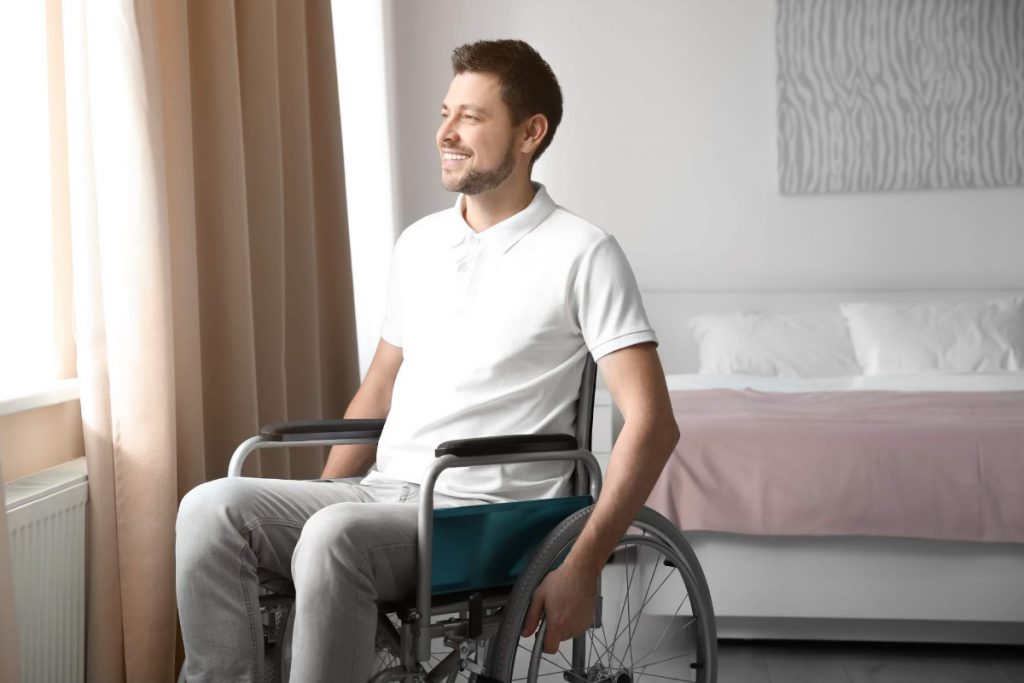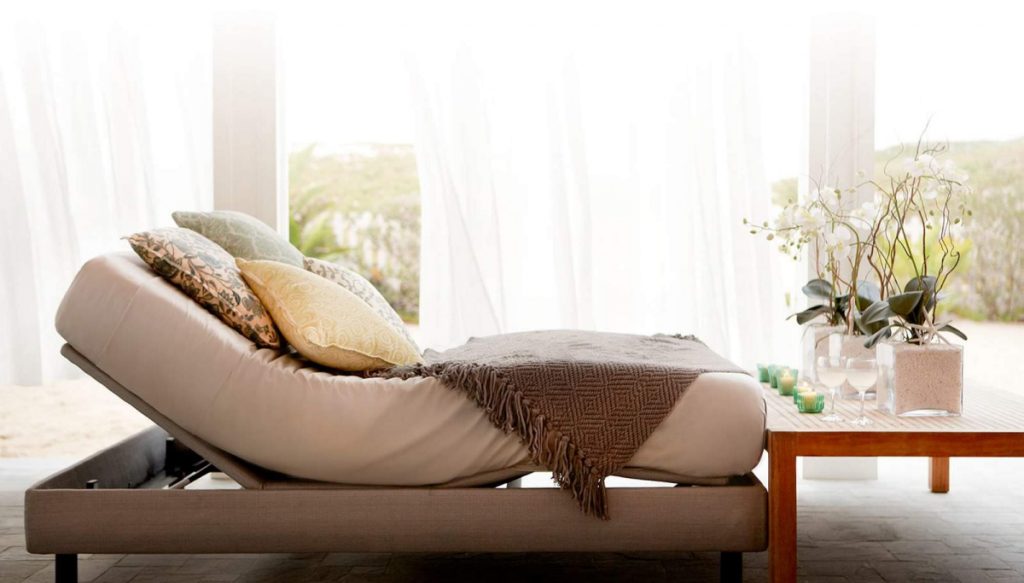How to Make a Bedroom Accessible for Disabilities
Easy access to a good night’s sleep is a right everyone should have. Learn how to modify a bedroom to be disability-friendly.
By Ashley Little
Your bedroom should be your oasis for rest and relaxation at the end of a long day. Even if you have to spend a lot of time in your bedroom due to your disability, it should be a comfortable place where you can relax and live in with ease.
Modifying the home to accommodate for living with a disability is an option for all the rooms in your home, though your bedroom is among the most important. A bedroom should be a space for healing and eliminating stress. You should never have to deal with added stress due to the difficulty of entering your bedroom and climbing in and out of bed.
For those who have disabling conditions, utilize a wheelchair for mobility, are affected by sensory processing disorders, or have other special needs, it’s important that certain modifications are in place to make the bedroom a comfortable and easily accessible space.
Take tips from these areas of consideration for the most important adjustments needed for a disability-friendly bedroom.

Create Accessible Bedroom Doorways
One of the first considerations to make involves your entrance to your bedroom. For those who utilize walking aids or wheelchairs, it’s important to have a wide enough doorway for all equipment to fit through so you don’t have to sacrifice your support.
Tonya Bruin, CEO of To Do-Done, a business specializing in renovations including accessible design, states, “It’s important to keep the width of the doorway or entrance of rooms in mind for accessible design. A 36-inch door frame or entrance is enough for wheelchairs and walkers to fit through easily, but for more seamless entry, consider going as wide as 42 inches.”
Allowing ample space for entry is a key first step to making a bedroom accessible. Additionally, you should ensure that the door has swing clear hinges so it can swing completely clear of the door opening and a lever-style handle to allow for easier opening.
Check Size and Location of the Bedroom
Allowing ample room for maneuvering through the bedroom, especially for those in wheelchairs, is a key factor of accessibility. Generally, a room size of 10’x12’ is a sufficient amount of space, but personal circumstances may have an effect on the optimal size.
Consider the size of your bed and how much space is taken up by dressers and nightstands. The best size for you is the one that allows easy clearance for movement. You should allow for at least 3’ of clearance around the bed, but as much as 5’ clearance may be necessary. To ensure the bedroom is wheelchair accessible, allow a 5’x5’ floor space for turning.
If possible, your bedroom will be most accessible if located on the first floor of your home. It is generally recommended for those with disabilities to reside in one-story homes to lower stress and strain on the body from climbing stairs. If your home’s bedroom is not located on the first floor, consider possible modifications in the rooms on the first floor to see if one of those spaces could function as a bedroom.
Minimize Injury Risks
To avoid chances of accidental injury, be sure your bedroom has clear pathways for entry. Leaving clutter lying around increases the chances of falling and harming oneself. Clothes and other accessories should be out of the way, especially in the walking space leading directly to and from the bed. Any cords from medical equipment or bedroom technologies should be also be properly stowed away.
Loose carpet or slippery tiles are hazards that should be taken care of as they could lead one to fall. If hardwood floors present a challenge for your feet properly gripping the floor, you may want to lay down a rug or have carpet installed.
Consider other places where you may tangle your feet as well, such as excess bedding at the foot of your bed. Having a bed skirt or comforter that reaches all the way to the floor can be dangerous while climbing in and out of bed. Remove your bed skirt and choose a comforter that properly lies across the surface of your bed without reaching to the floor to avoid such issues.
Make Adjustments to the Bed
The focus point of your bedroom and the most important place to be sure you have easy access to is the bed. There are several adjustments that can be made to make getting in and out of bed an easier experience.

Place your bed at the correct height
For easiest transfers in and out of bed, whether alone or with a caretaker’s assistance, it is recommended that the top of your mattress is at the same level as your wheelchair sits. If you do not use a wheelchair, the recommended height for easy access in and out of bed is 20 to 23 inches.
In order to adjust the height of your bed, your options are to:
- Replace your mattress
- Use furniture risers
- Remove or add a box spring (only remove if your bed frame can offer sufficient support without a box spring)
Ensuring your bed is at a proper height will make getting in and out of bed more comfortable for those with any type of disability.
Install ceiling lifts
Install ceiling lifts
Ceiling lifts are used to raise and lower an individual to the bed. These motorized lifts are attached to a track system and they can slide horizontally to help those in wheelchairs transfer to the bed. If installing ceiling lifts, be sure to carefully follow recommendations from the manufacturer for safety precautions.
Use bed rails or grab bars
Bed rails or grab bars can be used for a variety of purposes. They can be used as a support system while climbing in and out of bed, adjusting positions in bed, or used to prevent rolling and falling out of bed.
There are many different options for types of bed rails and grab bars, and some require the assistance of a caregiver, so be sure to choose the ones that fit your individual needs best. For the best adaptability, you may want to select adjustable bed rails that can be altered to your needs.
Consider an adjustable bed
Adjustable beds are beds that can be set in a flat position or other alternative positions. For those with limited mobility, an adjustable bed can help individuals get comfortable in different body positions with minimal effort. The functionality of being able to elevate the feet is also a beneficial feature for those with circulatory issues as this helps blood flow back into the body and reduce pain.

Adjustable beds can make it easier for people to sit up and get out of bed. If you find getting out of bed difficult but don’t have a caregiver to help lift you, an adjustable bed may be the best option for you.
Modifying for Sensory Processing Disorder
Those with autism, ADHD, or sensory processing disorder will need special accommodations for their comfort in their bedroom. The adjustments you may need to make include:
Changing paint colors. Some can be extremely sensitive to the color of the paint on the walls. Relaxing and calming colors include neutral shades with low intensity. Avoid bright colors or patterns.
Keeping storage tidy. Clutter can be a large cause of anxiety. Keep the bedroom clean and organized by using out-of-sight storage bins.
Lower the lights. Bright, fluorescent light can be aggravating. Soft, natural lighting will be best during the day, but darkness is important during the night. Consider using two layers of curtains, a light and airy layer and a thick, darker layer to adjust accordingly throughout the day.
Change the bedding. Certain fabrics and textures may be irritating, so switching out the bedding may be necessary. You also may want to consider a weighted blanket for comfort.
Those with sensory processing disorder may be extra particular about colors, lights, fabrics, and textures. The key is finding the options that make them the most comfortable.
Although some of these modifications may require more effort than others on the front end, they will be immensely beneficial in making individuals with disabilities feel more comfortable in their bedrooms. Having easier access to achieving your best night’s sleep each night is priceless.




